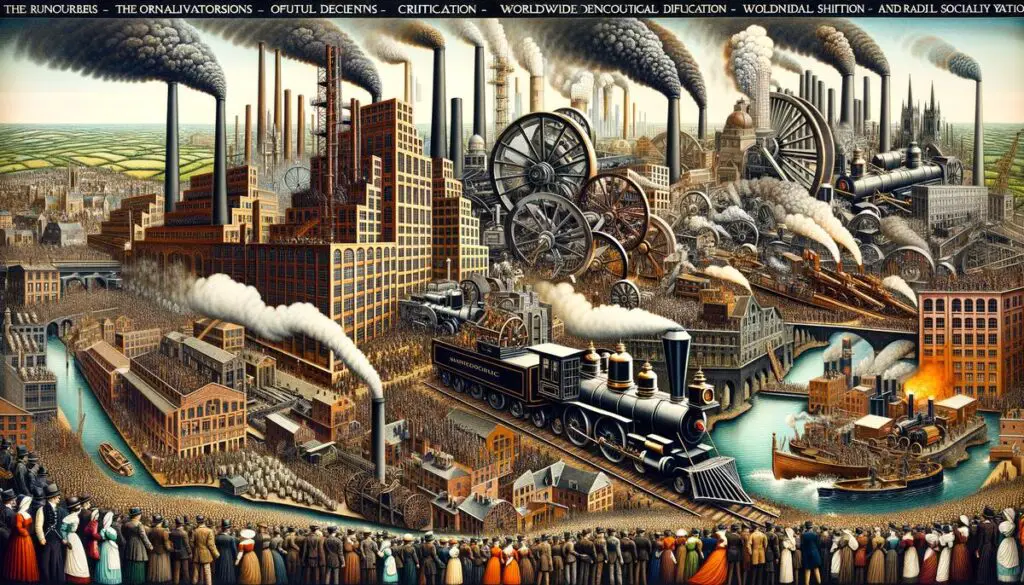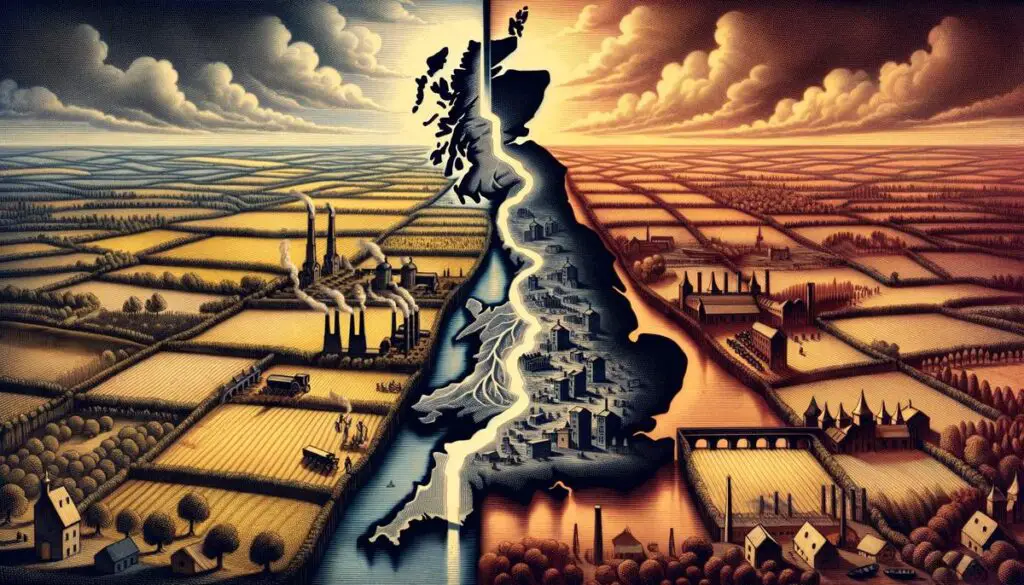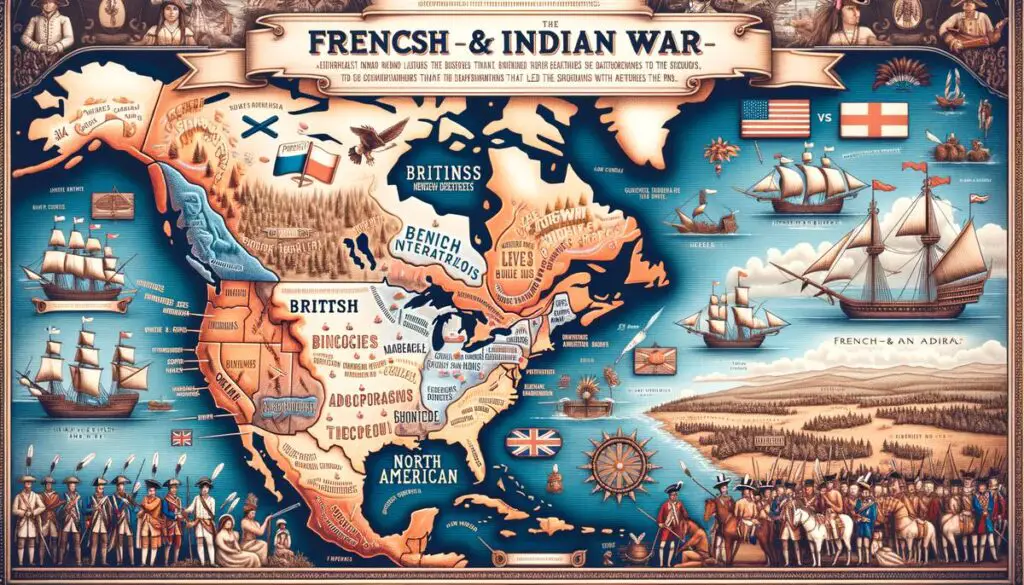The Industrial Revolution, a pivotal era of transformation and innovation, began reshaping the world in the late 18th century, leading into the 19th century. This period is marked by the leap from crafting goods by hand to manufacturing them with machines, in turn, altering societies and economies at their very core. The reasons behind this monumental shift are varied and complex, involving technological breakthroughs, the availability of natural resources, evolving economic conditions, and significant social changes. This article aims to explore these diverse factors, offering insights into how they collectively sparked a revolution that heralded a new epoch of industrialization and modernization that continues to shape our world today.
Origins and Catalysts of the Industrial Revolution
The Industrial Revolution
A period of great innovation and transformation that reshaped the world, began in the late 18th century and continued into the 19th century. It marked the transition from handmade goods to machine-produced goods, profoundly altering societies and economies. But what ignited the spark for such a monumental shift? The answer lies in a combination of factors including technological advancements, natural resources, economic conditions, and social changes.
At the heart of the Industrial Revolution was a series of technological inventions that dramatically increased the efficiency of manufacturing. The spinning jenny, the water frame, and the steam engine were among the key innovations that fueled industrial growth. The spinning jenny, invented by James Hargreaves in 1764, revolutionized the textile industry by allowing workers to spin more wool at once. Meanwhile, Richard Arkwright’s water frame, introduced in 1769, harnessed water power to further automate spinning. However, it was perhaps James Watt’s enhancement of the steam engine in the latter half of the 18th century that truly catalyzed the Industrial Revolution, providing a reliable power source that could be used in various industries and not just near rivers or streams.
Natural resources played a significant role as well. Great Britain, where the Industrial Revolution began, was rich in coal and iron—two resources crucial for powering and building machines. The abundance of coal provided fuel for steam engines, while iron was used in constructing machines and building infrastructure such as railways, which were instrumental in the transportation of goods and materials.
Economic conditions also set the stage for industrialization. The expansion of trade networks and the rise of a capitalist economic system encouraged investment in new technologies and factories. Entrepreneurs seeking profit were motivated to explore more efficient production methods, leading to the growth of a factory-based system. Additionally, the Enclosure Movement, which consolidated land into larger farms, displaced rural workers and provided a pool of labor for newly established factories in urban areas.
Social changes further accelerated the Industrial Revolution. Population growth increased the demand for goods, while improvements in agriculture meant fewer people were needed to work the land, pushing them towards factory jobs in cities. The promise of higher wages and a better standard of living drew many to urban areas, providing labor for industries and creating a market for mass-produced goods.
In conclusion, the spark of the Industrial Revolution was ignited by a confluence of technological, economic, natural, and social factors. Together, these elements created a powerful momentum for change that ushered in a new era of industrialization, shaping the modern world in countless ways.
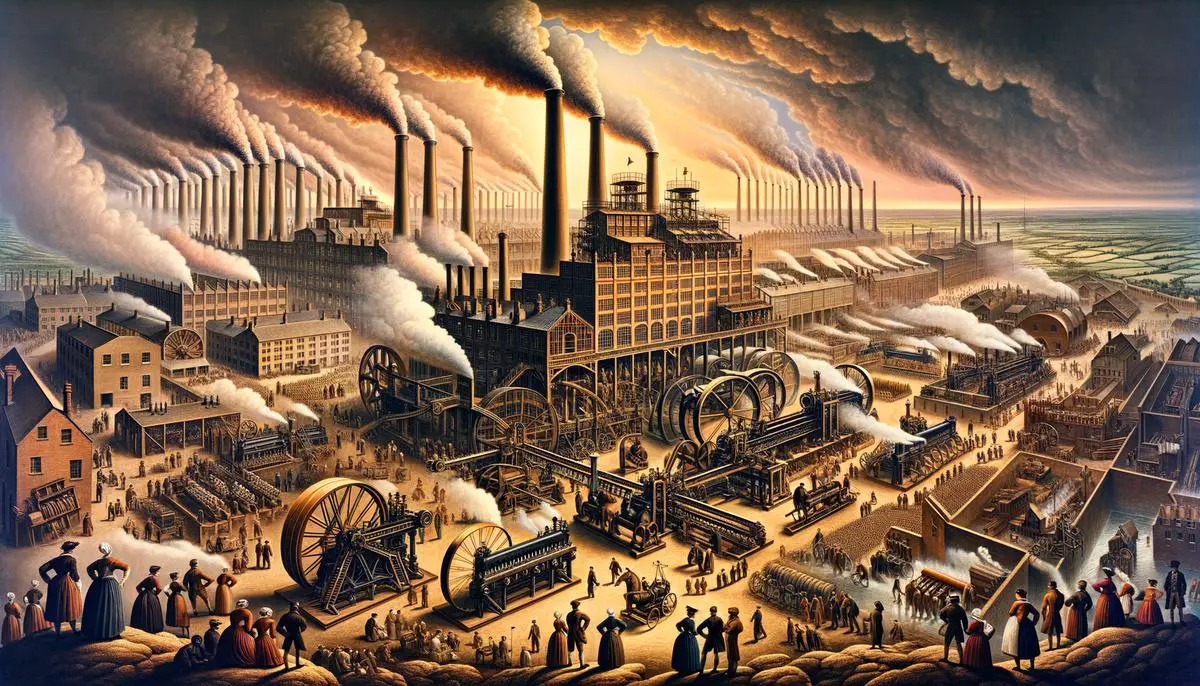
Impact on Society and the Workforce
As society transitioned through the Industrial Revolution, the essence of human labor and community structure witnessed a profound transformation. Previously, work was predominantly based in agriculture, where families tended to their farms, and craftsmen honed specific trades within small workshops. This era, however, marked the beginning of a shift towards a more organized, factory-based employment structure, significantly altering the daily lives and environments of countless individuals.
The very nature of work was redefined as factories required a different type of labor discipline compared to agricultural or craftsman work. Clocks and strict schedules dictated the rhythm of the day, introducing the concept of “working hours” and a separation between work and home life that had not existed in the same way before. This mechanization of labor not only increased production rates but also led to the specialization of labor. Workers performed repetitive, specific tasks, becoming parts of a larger machine. While this specialization could increase efficiency, it also meant that many workers could no longer take pride in the completion of a product from start to finish, as they might have in a craft-based system.
The factory system fostered a clear divide between workers and the owners of production means, setting the stage for a new class structure within society. On one side were the capitalists, who owned the factories and controlled the wealth, and on the other, the working class, who sold their labor for wages. This divide contributed to the emergence of labor movements and the fight for workers’ rights, including shorter working hours, better working conditions, and the right to unionize, which would become pivotal points of social and political activism in the years to follow.
Moreover, the changing landscape of work had significant implications for family dynamics and roles within the household. As men, women, and even children left their homes to work long hours in factories, the traditional roles and structures within families shifted. The concept of childhood began to change, with reformers advocating for the protection and education of children rather than their employment in factories from a young age.
In addition, the Industrial Revolution catalyzed significant advancements in transportation, such as the development of the railroad and steamship. These innovations not only facilitated the mass distribution of goods over unprecedented distances but also reshaped the social fabric by enabling the migration of populations, both within nations and across continents. People moved in search of work, leading to the growth of cities and the urbanization of societies. This urban migration contributed to the development of new social institutions, including schools and police forces, but also to challenges such as overcrowding, pollution, and the spread of diseases in rapidly expanding urban areas.
In conclusion, the Industrial Revolution was much more than a period of technological advancements; it was a pivotal moment in human history that reshaped the structure of society and the nature of work itself. It challenged traditional social hierarchies and birthed new ideologies, laying the groundwork for the modern industrialized world. Its impact extended beyond factories and machines, penetrating deep into the social fabric, altering how individuals viewed their work, their rights, and their place within the broader society.
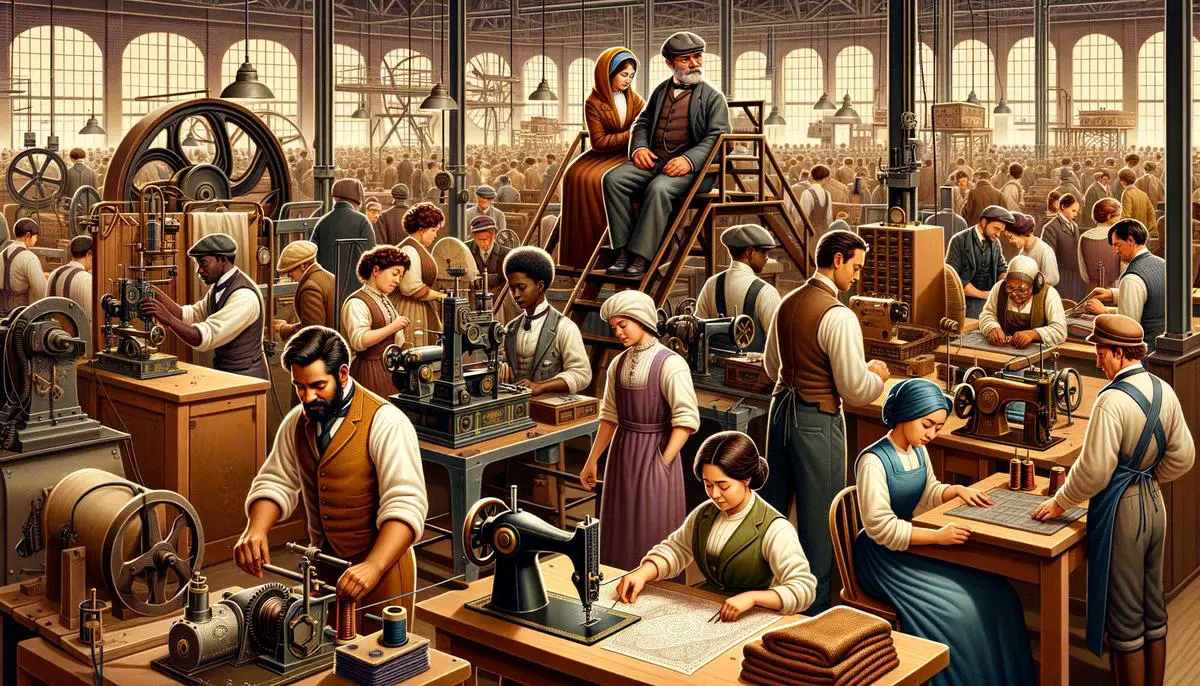
Technological Advancements and Innovations
With the foundation of understanding the Industrial Revolution’s broad consequences, it’s critical to highlight the technological landmarks that punctuated this era of unprecedented change. Central to this period was the development of iron-making techniques, notably the puddling process introduced by Henry Cort in the late 18th century. This process involved stirring molten iron in a reverberatory furnace, allowing carbon to oxidize and separate, producing a purer form of iron. This advancement in iron production not only made iron more affordable but also more available for use in machinery, railways, and buildings, laying the groundwork for modern infrastructure.
Another significant innovation was the development of the power loom by Edmund Cartwright in 1785, automating the weaving process and significantly increasing the speed and efficiency of fabric production. This innovation was a leap forward from the manual labor of traditional handloom weaving, integrating seamlessly with the mechanized spinning processes earlier introduced by the spinning jenny and the water frame. The power loom’s widespread adoption was instrumental in consolidating the textile industry as a driving force of the Industrial Revolution, enhancing Britain’s capacity to produce cloth on an industrial scale.
The invention of the steam locomotive by George Stephenson, culminating in the opening of the Stockton and Darlington Railway in 1825, revolutionized transportation. This first public railway to use steam-powered locomotives marked the beginning of a global transformation in how goods and people moved across distances, shrinking travel times, and expanding economic markets beyond local trading regions. Railways became the arteries of the industrial world, not only facilitating the distribution of raw materials and finished products but also influencing the migration patterns of labor and the expansion of cities.
In the realm of communication, the optical telegraph, a precursor to the electric telegraph, emerged as an early form of instant long-distance communication. Developed in the late 18th century, it used a network of towers equipped with movable arms to relay messages in a code. This system, although limited by visibility conditions, marked an essential step towards the rapid exchange of information over long distances. The subsequent invention of the electric telegraph by Samuel Morse in the 1830s further accelerated communication, facilitating the coordination of railway transport and the transmission of news and commercial information across continents in real time.
Lastly, the Industrial Revolution witnessed the advent of processes for making steel, such as the Bessemer process introduced by Henry Bessemer in 1856. This innovation dramatically reduced the cost and time it took to produce steel, a material stronger and more durable than iron, which became fundamental to the construction of skyscrapers, bridges, and railways. The ability to mass-produce steel fueled the expansion of the industrial infrastructure, enabling the creation of modern cities and the architectural feats of the later Industrial Age.
Each of these technological milestones contributed to a world profoundly transformed by the capabilities and efficiencies of industrialized production. Together, they facilitated a shift in human civilization that would lay the foundation for the contemporary era, characterized by rapid technological advancement, global connectivity, and the continuous evolution of industrial and economic systems.
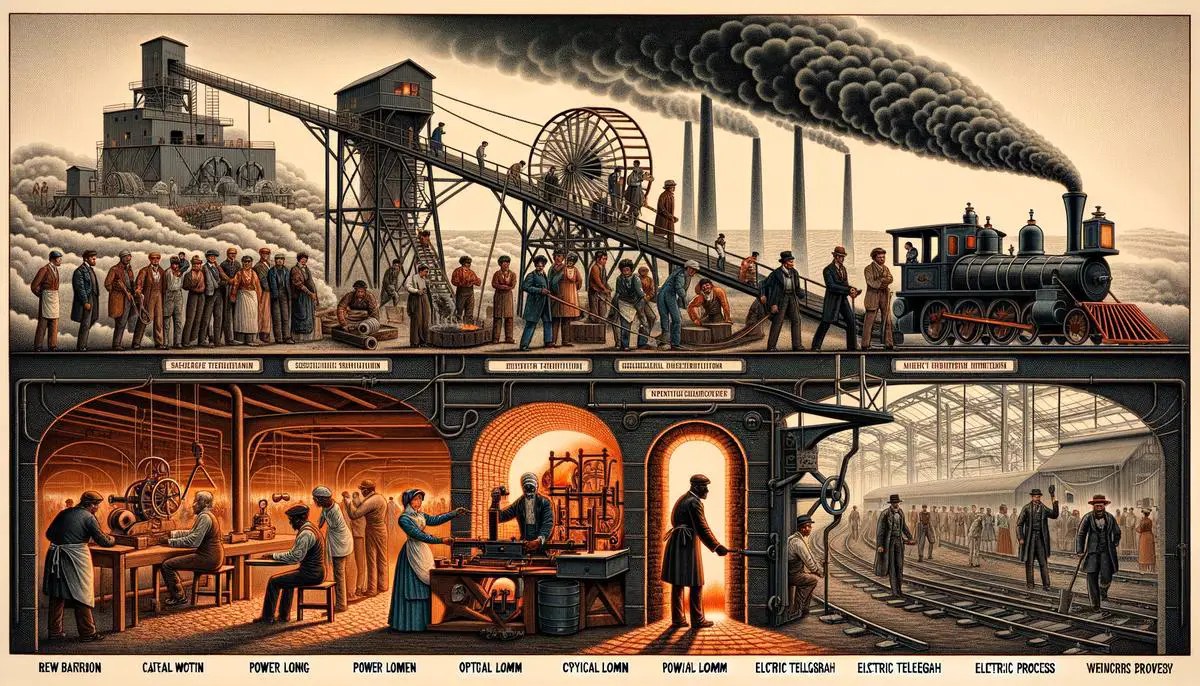
Global Spread and Influence
The Industrial Revolution’s expansion beyond Britain was fuelled by a combination of intellectual sharing, economic interest, and geopolitical forces. This monumental shift began in the late 18th century and continued well into the 19th, fundamentally altering societies worldwide. As British innovations proved successful, other nations were quick to take notice, eager to replicate the economic prosperity witnessed in Britain.
Europe, particularly countries like Belgium, France, and Germany, was among the first to adopt and adapt British industrial techniques. Belgium, rich in coal and iron as well as having a skilled labor force, easily assimilated technologies such as the steam engine and the process of puddling iron. France, with its vast resources and considerable investment capital, focused on mechanizing its textile industry, drawing inspiration from Britain’s machinery. In Germany, the delay in industrialization allowed for the adoption of more advanced British technologies, coupled with the country’s strong chemical and electrical engineering sectors, laying the groundwork for a powerful industrial base.
The transfer of technology was not a simple matter of purchase and replication. In many cases, British experts were hired or emigrated, bringing with them knowledge and expertise. The spread of the Industrial Revolution was also facilitated by the publication of books and journals that detailed industrial techniques, making the information more accessible to a wider audience.
Across the Atlantic, the United States was fertile ground for the seeds of industrialization. The young nation had vast natural resources, a growing population, and an entrepreneurial spirit. The War of 1812 played a significant role in America’s industrial journey. The blockade imposed by the British forced the United States to develop self-sufficiency, leading to the establishment of domestic industries. Innovations such as Eli Whitney’s cotton gin revolutionized the agricultural sector, while the adoption of British technologies transformed the manufacturing landscape. The opening of the Erie Canal in 1825 and the subsequent development of the railroad system further accelerated industrial growth, linking distant markets and resources across the continent.
The industrial revolution beyond Britain was not a mere copy of British practices but an adaptation to local conditions and resources. For example, in France and Germany, the state played a more significant role in supporting industrialization through policies and infrastructure development. In contrast, the American system emphasized decentralized entrepreneurship and innovation.
One of the most profound impacts of the Industrial Revolution’s spread was the increased connectivity between nations. The expansion of railroads, steamships, and telegraphic communications knit the world closer together, facilitating trade and international relations. This global network, however, also set the stage for intense economic competition and geopolitical rivalries that would define the 19th and early 20th centuries.
In essence, the Industrial Revolution’s spread beyond Britain was a multifaceted process that involved the transmission of ideas, adaptation to local circumstances, and significant social and economic transformations. It marked the beginning of a global shift towards industrialization that would shape the modern world, influencing everything from urbanization and labor to international politics and the global economy.
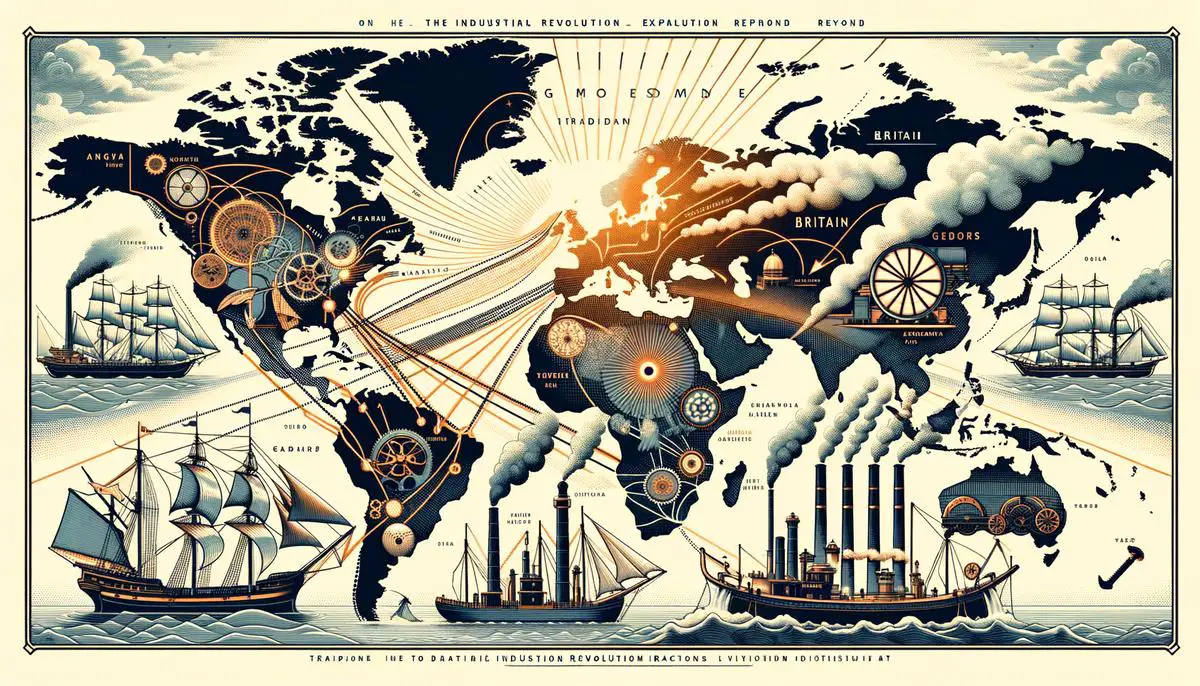
Criticism and Legacy
Building on the profound transformations catalyzed by the Industrial Revolution, its lasting critiques and contributions remain subjects of substantial discourse. Among these, the environmental impact commands significant attention. The rapid industrial growth that characterized the era brought with it an increased consumption of natural resources, particularly coal and iron, leading to deforestation, pollution, and long-term ecological damage. Cities, swollen with the influx of former rural dwellers seeking factory work, faced unprecedented levels of air and water pollution, a problem that persists in various forms today.
Another critical area of critique is the labor conditions within the burgeoning industries. The factory system introduced a regime of long hours, low wages, and hazardous work environments, often involving children. This necessitated the rise of labor movements aiming to secure better conditions, higher pay, and shorter working hours, laying the groundwork for modern labor rights and regulations.
However, the Industrial Revolution’s contributions can’t be overlooked. It ushered in an era of technological innovation that dramatically increased production capabilities and efficiency. This not only revolutionized manufacturing but also led to the development of a transportation infrastructure, including railways and steamships, that connected distant markets and facilitated global trade like never before.
Moreover, the shift towards industry catalyzed significant societal advancements. It created a wealth of opportunities, fostering a middle class and eventually leading to social reforms that improved living standards for many. Education, public health, and housing saw considerable enhancements in the wake of industrialization’s challenges.
The Industrial Revolution also had profound implications for gender roles and the structure of the family. As men, women, and sometimes children entered the workforce, traditional family dynamics were altered, contributing to shifts in societal norms and expectations regarding gender and work.
Technologically, the period saw inventions that would lay the foundation for the modern world, from advancements in steel production to the genesis of electrical communication systems. These innovations not only transformed industries but also had wide-reaching effects on social interaction, information dissemination, and the pace of life.
Globally, the Industrial Revolution marked the beginning of an interconnected world economy, promoting both cooperation and competition among nations. It provided the impetus for imperialism and colonization as industrialized countries sought new markets and resources, reshaping global power dynamics in the process.
In sum, the Industrial Revolution was a watershed moment in human history, marked by tremendous innovation and profound change. While it brought significant challenges, many of which continue to echo today, its contributions to technological progress, economic development, and the reshaping of society are undeniable. As we forge ahead, reflecting on these critiques and contributions provides valuable lessons for addressing the complexities of modern industrial and post-industrial societies.
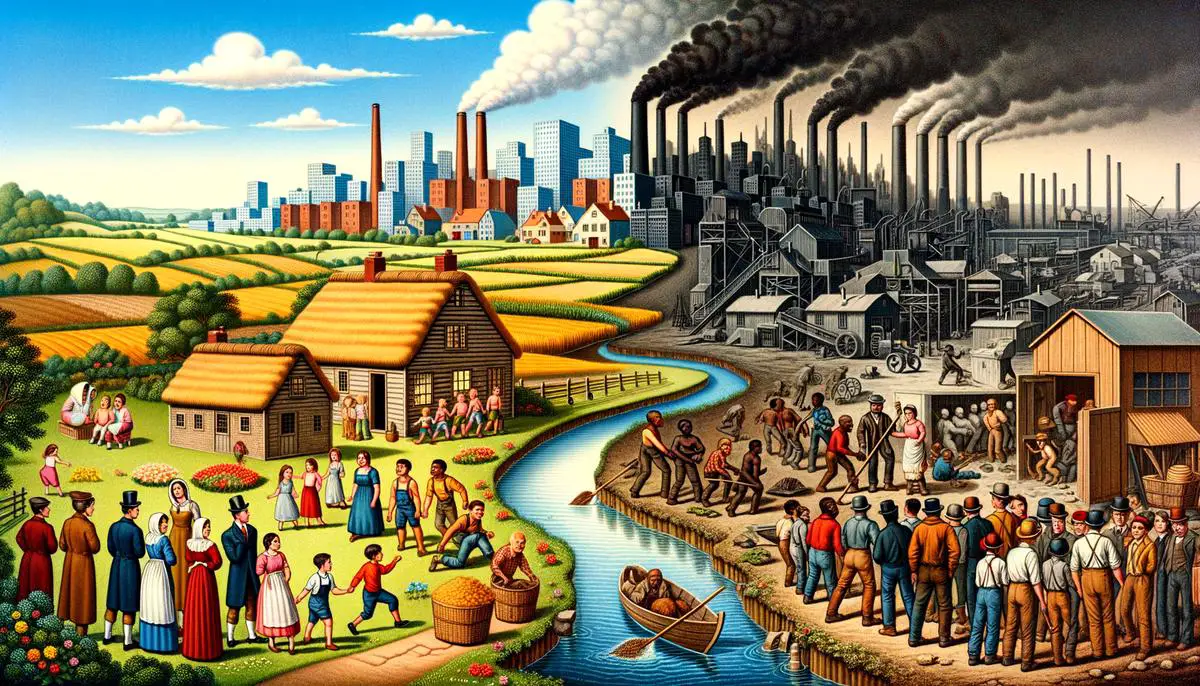
The Industrial Revolution stands as a testament to human ingenuity and the relentless pursuit of progress. Through a combination of technological innovation, economic ambition, and societal transformation, it not only revolutionized industry but also redefined the human experience. The legacies of this era are intricately woven into the fabric of modern society, from the structures of our cities to the rhythms of our daily lives. As we look back on this transformative period, we gain valuable perspectives on how to harness technology and innovation to address contemporary challenges, while also remaining mindful of the social and environmental responsibilities that accompany such profound change.
- Julius Caesar Adaptations - April 15, 2024
- Declaration of Independence - April 15, 2024
- US Civil War Analysis - April 14, 2024

